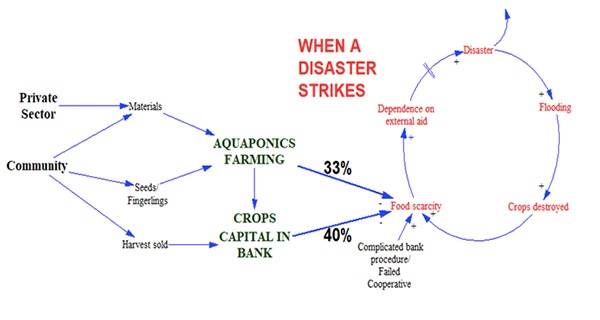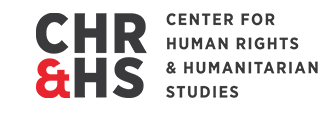Aquaponics For Sustainable Food Security During Pre- & Post-Disasters

This is a proposed venture project focusing on sustainable food security and livelihood opportunities through women empowerment and collectivism, capacity building, and dynamic pressures from the community. The construction of aquaponics (AQS) units in a rural, highly vulnerable community is the main focus of this venture. Capitalizing on the multi - sectoral collaborations between financial institutions, academe, non-government organizations, and Barangay Local Government Units (BLGUs), the project is geared towards the attainment of food security as well as alternative livelihood that will contribute to the community’s resiliency before and after a disaster.
The image above shows the system analysis of the community’s response when a post-disaster event, e.g., flooding, occurs (RED FONT). When flooding happens, the community’s crops are destroyed, leading to immediate food scarcity. Such is experienced because of the absence of long-term food storage facilities. In addition, the target community have experienced failed cooperatives as well as a high procedural barrier in utilizing bank services. It is during these instances of post-disaster that there is food shortage and a strong dependence on external aid. Thus, when there is insufficient external aid, it has lead to prolonged food shortage and a possibility of protracted disaster, e.g., chaos and anarchy, among the members of the targeted community.
Also, the image suggests two approaches in these dire situations. The first is achieved by the community actively planting, selling produce, and storing seeds. The AQS units are maintained daily and will be capable of providing 2% of households with food needed every 4 months at pre-disaster, but 33% of households for 2 weeks at post-disaster. The second approach involves the community selling a fraction of the harvest for crop capital that is stored in the bank. When a disaster strikes, the crop capital is then converted to commercially-available food that is then delivered to the community. At the end of the first year, it is projected that the crop capital will be sufficient to provide for 40% of households.
The coupling of the AQS to pre-disaster savings (crop capital in bank) is a necessary novelty to increase the immediate food available to the community when a disaster strikes. Such savings has been demonstrated to cut down disaster cost by a factor of six (Habitat, 2018). It principally relieves the financial stress of the state in responding to the disaster, while allowing the community to get a hastened financial support. However, there needs to be a regular withdrawal process once a set minimum is achieved, in the event a disaster did not happen. This feedback process allows the community to be assured that their savings can also help them during peace time.

